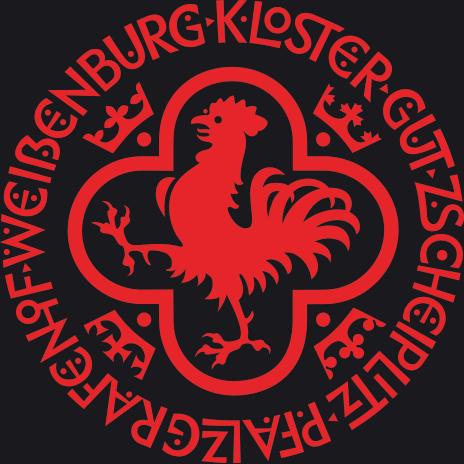Nach der Annahme des neuen Familienwappens im Jahr des Herrn 2020, das geändert wurde, um das Erbe der Freiherren von Knabenau widerzuspiegeln und zu bewahren, wurde die neue heraldische Komposition in Auftrag gegeben, um eine solche Änderung darzustellen.
Nach gebührender Berücksichtigung von Künstlern aus Polen, Frankreich und Deutschland wurde ein spanischer Künstler für die Ausführung der Komposition ausgewählt – Nikolai Lopez Pomar aus der Stadt Palma De Mallorca.
Der 2002 geborene Nikolai hat sich bereits als aufstrebender Stern der heraldischen Kunst etabliert und schuf komplexe, vielschichtige Kompositionen im Stil spanischer Renaissance-Wandmalereien und Pietra-Dura-Tafeln italienischer Kirchen und Paläste. Nikolais Wappenzeichnungen integrieren Elemente unterschiedlicher Herkunft und heraldischer Traditionen, harmonisiert durch klangliche Einheitlichkeit und grafische Reinheit.
Nach gebührender Berücksichtigung von Künstlern aus Polen, Frankreich und Deutschland wurde ein spanischer Künstler für die Ausführung der Komposition ausgewählt – Nikolai Lopez Pomar aus der Stadt Palma De Mallorca.
Der 2002 geborene Nikolai hat sich bereits als aufstrebender Stern der heraldischen Kunst etabliert und schuf komplexe, vielschichtige Kompositionen im Stil spanischer Renaissance-Wandmalereien und Pietra-Dura-Tafeln italienischer Kirchen und Paläste. Nikolais Wappenzeichnungen integrieren Elemente unterschiedlicher Herkunft und heraldischer Traditionen, harmonisiert durch klangliche Einheitlichkeit und grafische Reinheit.

AvH: Was waren die Herausforderungen bei der Gestaltung der heraldischen Komposition für die Familie Hahn-Weißenburg?
NLP: Sowohl das Hahn- als auch das Knabenau-Wappen gehören zur frühesten heraldischen Tradition. Hahns Wappen ist relativ einfach, nur zwei Farben und eine Wappenfigur; Knabenau ist etwas komplexer und spiegelt ein komplexes Familienerbe mit drei Farben wider. Insgesamt fünf Farben und vier Wappenfiguren. Die Kombination dieser beiden Arme in einer Komposition war eine ziemliche Herausforderung: sich aufbäumendes Pferd, Ritter mit Banner, Schild, Mantel – und alles in Dynamik, in Bewegung. Dies erforderte ein gewisses Maß an Improvisation. Damit meine ich digitale Methoden der Farbwiedergabe – meiner Meinung nach ein wirklich gutes Beispiel dafür, wie mittelalterliche ikonografische Traditionen und Kunst der neuen Ära zusammenkommen, um eine neue Form der Heraldik zu schaffen.
AvH: Was ist Ihrer Meinung nach die Zukunft der Heraldik, digital oder traditionell?
NLP: Ich denke, dass die Zukunft der Heraldik zweierlei ist: Die traditionelle Kunst wird nicht sterben und neben der modernen Heraldik weiter existieren, weniger starr, zugänglich, vielleicht weniger formal, aber zugänglicher für Amateurkünstler, die bereit sind, zu improvisieren, um sich zu verbessern ihre Kunst.
AvH: Glauben Sie, dass die Tradition eine solche „Verbesserung“ überlebt?
NLP: Ja! Tradition wird immer notwendig sein, wird immer eine Grundlage bilden. Die Heraldik wird sich im digitalen Zeitalter weiterentwickeln und aufblühen, ohne dabei zu vergessen, woher sie kommt.
AvH: Welche Rolle spielt die Heraldik in der heutigen Welt?
NLP: Die Heraldik wurde im 13. Jahrhundert „erfunden“, um den Unterschied zwischen der wachsenden Zahl prominenter Familien und Clans zu erkennen. In unserem Zeitalter der Massenproduktion und Strandartisierung wird die Heraldik unerlässlich, um eine starke Aussage über Individualität und Unterscheidung zu machen. Wie bei der Familie Hahn-Weißenburg ist und bleibt das Erbe ein wesentlicher Teil der Geschichte einer Familie über Jahrhunderte und Jahrtausende hinweg.
---
Alexander v. Hahn, Mai 2024
NLP: Sowohl das Hahn- als auch das Knabenau-Wappen gehören zur frühesten heraldischen Tradition. Hahns Wappen ist relativ einfach, nur zwei Farben und eine Wappenfigur; Knabenau ist etwas komplexer und spiegelt ein komplexes Familienerbe mit drei Farben wider. Insgesamt fünf Farben und vier Wappenfiguren. Die Kombination dieser beiden Arme in einer Komposition war eine ziemliche Herausforderung: sich aufbäumendes Pferd, Ritter mit Banner, Schild, Mantel – und alles in Dynamik, in Bewegung. Dies erforderte ein gewisses Maß an Improvisation. Damit meine ich digitale Methoden der Farbwiedergabe – meiner Meinung nach ein wirklich gutes Beispiel dafür, wie mittelalterliche ikonografische Traditionen und Kunst der neuen Ära zusammenkommen, um eine neue Form der Heraldik zu schaffen.
AvH: Was ist Ihrer Meinung nach die Zukunft der Heraldik, digital oder traditionell?
NLP: Ich denke, dass die Zukunft der Heraldik zweierlei ist: Die traditionelle Kunst wird nicht sterben und neben der modernen Heraldik weiter existieren, weniger starr, zugänglich, vielleicht weniger formal, aber zugänglicher für Amateurkünstler, die bereit sind, zu improvisieren, um sich zu verbessern ihre Kunst.
AvH: Glauben Sie, dass die Tradition eine solche „Verbesserung“ überlebt?
NLP: Ja! Tradition wird immer notwendig sein, wird immer eine Grundlage bilden. Die Heraldik wird sich im digitalen Zeitalter weiterentwickeln und aufblühen, ohne dabei zu vergessen, woher sie kommt.
AvH: Welche Rolle spielt die Heraldik in der heutigen Welt?
NLP: Die Heraldik wurde im 13. Jahrhundert „erfunden“, um den Unterschied zwischen der wachsenden Zahl prominenter Familien und Clans zu erkennen. In unserem Zeitalter der Massenproduktion und Strandartisierung wird die Heraldik unerlässlich, um eine starke Aussage über Individualität und Unterscheidung zu machen. Wie bei der Familie Hahn-Weißenburg ist und bleibt das Erbe ein wesentlicher Teil der Geschichte einer Familie über Jahrhunderte und Jahrtausende hinweg.
---
Alexander v. Hahn, Mai 2024






